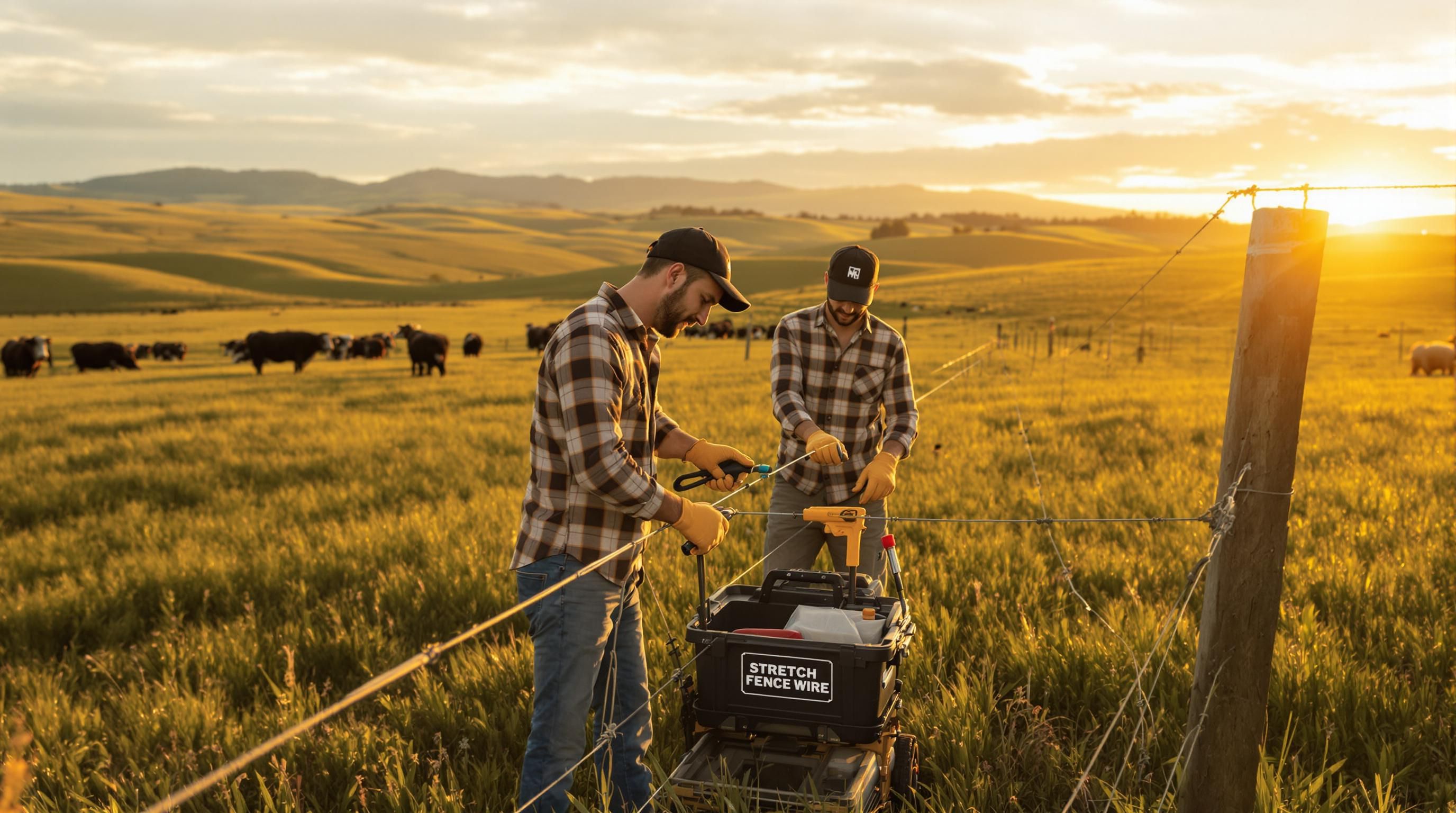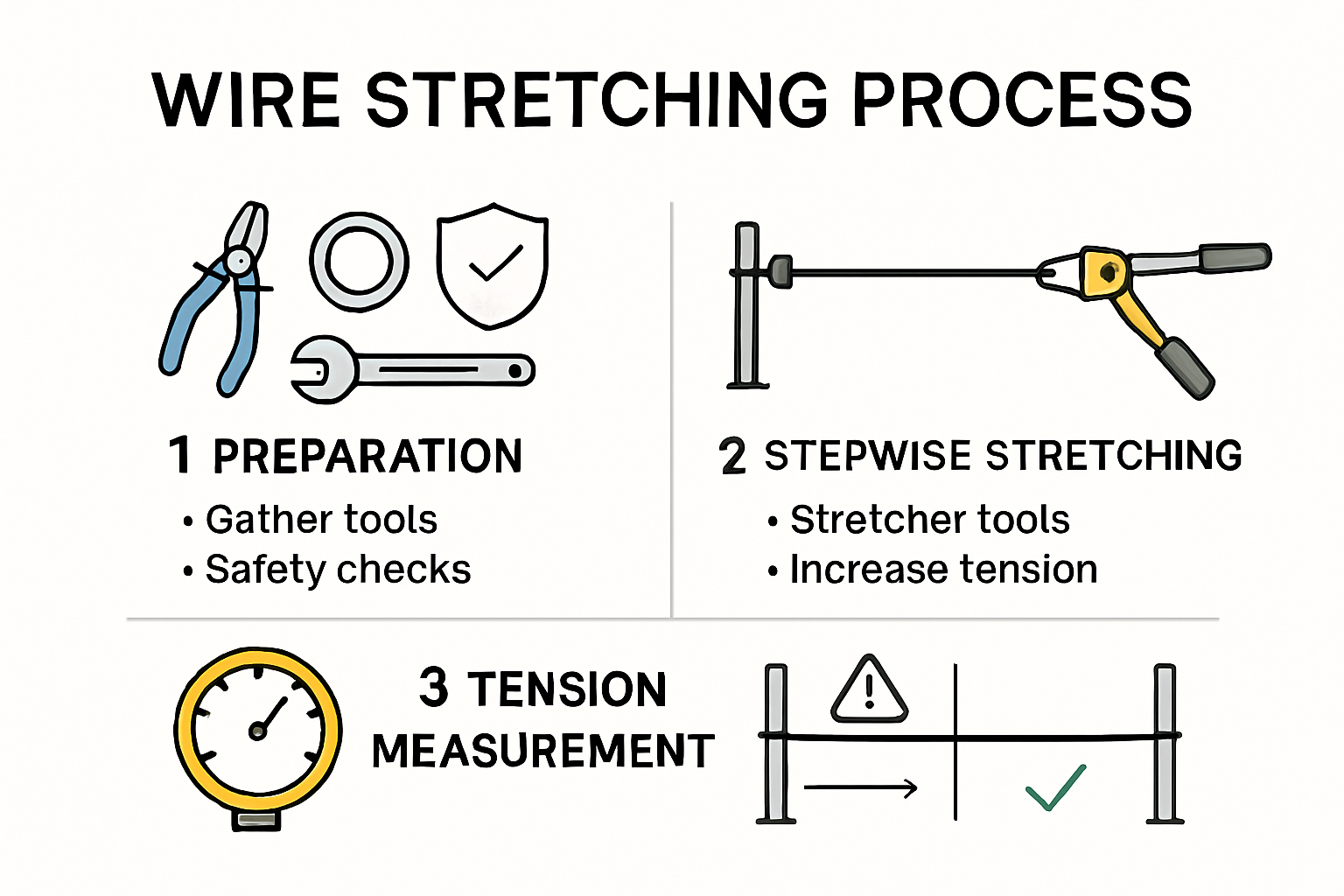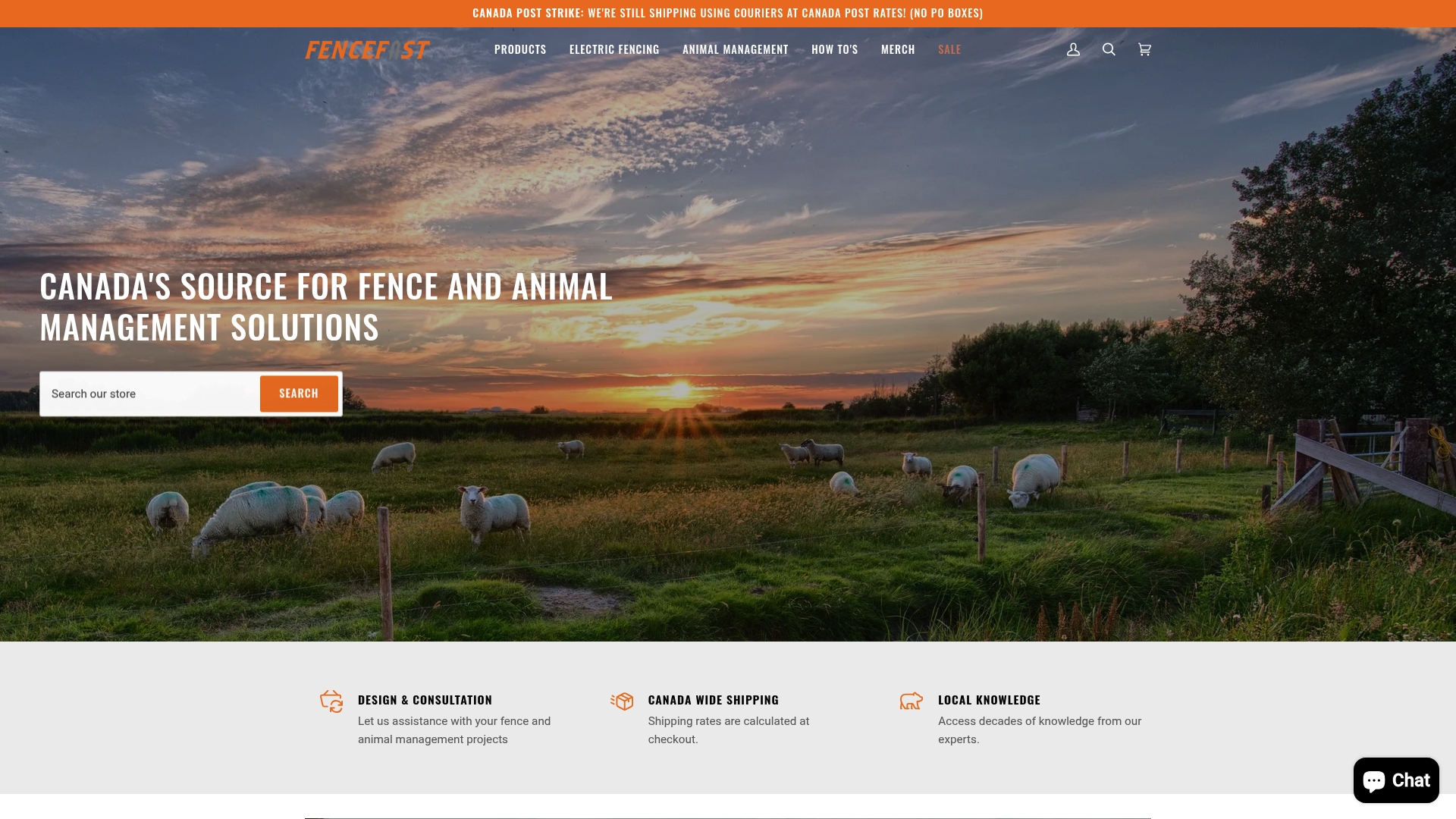
Stretching fence wire might sound simple. Anyone can pull a wire tight and call it a day, right? But the reality is using the right gauge and technique can actually double your fence’s lifespan and cut material costs by up to 25 percent. Most people make basic mistakes that lead to sagging wires and wasted materials. Learn why proper planning and a few expert moves make all the difference.
Table of Contents
- Choosing The Right Tools And Fence Wire
- Preparing Posts And Planning Fence Layout
- How To Stretch Fence Wire Safely And Evenly
- Securing And Maintaining Stretched Fence Wire
Quick Summary
| Takeaway | Explanation |
|---|---|
| Select the right wire gauge | Use 12-9 gauge high-tensile wire for most applications to ensure strength and durability. |
| Use appropriate tools for installation | Essential tools include wire stretchers, tension measuring devices, and post drivers for effective setup. |
| Plan your fence layout strategically | Assess terrain and use mapping resources to ensure optimal post placement and efficient material use. |
| Stretch wire evenly and safely | Apply gradual tension and check wire for kinks to maintain structural integrity during installation. |
| Implement regular maintenance checks | Conduct quarterly inspections to address rust, tension changes, and vegetation control for longevity. |
Choosing the Right Tools and Fence Wire
Successful fence wire installation depends on selecting appropriate materials and tools that match your specific agricultural or property management needs. Understanding wire types, gauges, and characteristics helps ensure durability, effectiveness, and long-term performance.
Selecting the Appropriate Wire Gauge
The wire gauge plays a crucial role in fence wire performance. Research from the University of Missouri Extension recommends using 12-9 gauge high-tensile wire for most fencing applications, offering an optimal balance between strength and conductivity. Heavier gauge wires like 10 or 8 gauge are recommended for longer fence runs or challenging environmental conditions, ensuring consistent voltage and reduced electrical resistance.
When choosing wire, consider factors such as terrain, livestock type, and potential environmental stressors. High-carbon steel wires provide superior strength and corrosion resistance compared to traditional low-carbon alternatives. According to Bekaert Fencing, high-tensile wire allows for wider post spacing up to 20 feet, reducing material costs and installation time.
Essential Tools for Wire Stretching
Preparing the right tools is critical for effective fence wire installation. Key equipment includes:
- Wire Stretcher: A specialized tool designed to apply uniform tension across the wire
- Tension Measuring Device: Helps achieve recommended tension levels around 200 pounds
- Wire Cutters: Precise cutting tools for accurate wire length
- Safety Gloves: Protect hands from wire edges and potential sharp points
- Post Driver: Ensures secure and stable fence post installation
The University of Wisconsin emphasizes the importance of using in-line strainers positioned midway along fence runs to maintain consistent wire tension. Avoid over-tightening, which can create excessive pressure on fence posts and potentially compromise structural integrity.
Additionally, consider protective coatings for your wire, especially in humid environments. Quality coatings extend wire lifespan by preventing rust and corrosion, ultimately protecting your investment and ensuring long-term fence performance.
Here is a summary table outlining recommended wire gauges and their properties for different fencing applications:
| Wire Gauge | Best For | Main Benefits | Typical Use Case |
|---|---|---|---|
| 12-9 | General livestock, most farm fences | Optimal balance of strength & conductivity | Standard perimeter fencing |
| 10 | Longer fence runs, tougher environments | Lower resistance, added strength | Large pastures, wildlife fencing |
| 8 | Challenging conditions, extra durability | Max strength, lower voltage drop | High-pressure pens, long runs |
Preparing Posts and Planning Fence Layout
Planning a successful fence wire installation requires strategic preparation and meticulous layout design. Proper planning ensures not only functional boundaries but also maximizes land usage and reduces long-term maintenance challenges.
Mapping and Site Assessment
Virginia Tech’s agricultural guide recommends utilizing comprehensive mapping resources for effective fence planning. Land capability maps, aerial photographs, and topographical documents provide critical insights into terrain characteristics, helping farmers and property owners design precise fencing systems.
Before installation, conduct a thorough site survey to identify potential obstacles such as rock formations, slopes, water bodies, and existing vegetation. Understanding these environmental factors helps determine optimal post placement and fence line routing. Consider factors like drainage patterns, soil composition, and potential erosion risks that might impact fence stability.
Strategic Post Selection and Installation
Farmers Weekly emphasizes the critical role of straining posts in maintaining fence integrity. End and corner posts must be robust enough to withstand significant wire tension. Recommended installation techniques include:
- Solid Straining Posts: Use heavyweight timber or metal posts at fence line endpoints
- Bracing Systems: Install diagonal or horizontal braces to distribute tension evenly
- Depth Considerations: Bury posts at least 2-3 feet deep, depending on soil type and fence height
- Post Material Selection: Choose rot-resistant wood like cedar or treated pine, or consider galvanized steel posts for enhanced durability
The Food and Agriculture Organization suggests an innovative approach by incorporating live posts such as trees, which offer multiple benefits including structural support, shade, and potential additional agricultural resources.
Spacing and Alignment Techniques
Precise post spacing and alignment are fundamental to creating a stable and effective fence. Standard spacing typically ranges between 10-20 feet, depending on wire type, terrain, and intended livestock containment. Use string lines or laser levels to ensure straight fence lines and consistent post positioning.
When working on uneven terrain, adapt your installation technique to maintain uniform wire tension. Stagger post heights slightly on slopes to keep wire lines level and prevent sagging. Consider using specialized slope-adaptation hardware that allows for more flexible post positioning.
Remember that a well-planned fence layout is an investment in your property’s infrastructure. Take time to plan carefully, select appropriate materials, and install posts with precision to create a durable, functional boundary system that will serve your agricultural or property management needs effectively.
Here is a table summarizing key considerations for post installation and layout planning:
| Consideration | Recommendations/Details |
|---|---|
| Post Type | Solid end & corner posts, live posts (trees) option |
| Bracing | Use diagonal/horizontal bracing at strain points |
| Depth | Bury 2-3 feet deep (depending on soil & fence type) |
| Material | Cedar, treated pine, galvanized steel |
| Standard Spacing | 10-20 feet between posts |
| Terrain Adaptation | Adjust post height/spacing on slopes |
How to Stretch Fence Wire Safely and Evenly
 Stretching fence wire requires precision, careful technique, and a methodical approach to ensure long-lasting fence performance. Understanding the proper stretching methods helps prevent wire damage, maintains tension, and creates a stable boundary for livestock or property management.
Stretching fence wire requires precision, careful technique, and a methodical approach to ensure long-lasting fence performance. Understanding the proper stretching methods helps prevent wire damage, maintains tension, and creates a stable boundary for livestock or property management.
Preparing for Wire Stretching
Before beginning the wire stretching process, gather essential safety equipment and tools. The North Carolina Cooperative Extension recommends using two small cords, a pulley, and specific knotting techniques to achieve an efficient wire stretching method.
Critical preparatory steps include:
- Inspecting all wire and connection points for potential weaknesses
- Clearing the fence line of debris and obstacles
- Ensuring adequate working space along the entire fence run
- Checking that all posts are securely anchored and can withstand tension
Precise Stretching Techniques
Louis Page emphasizes the importance of achieving a level pull uniformly across the fence height. Uneven stretching can cause significant structural issues, including wire distortion and potential weak points.
Key stretching strategies include:
- Gradual Tension Application: Incrementally increase wire tension to prevent sudden stress
- Uniform Height Stretching: Maintain consistent tension across the entire wire length
- Use of Specialized Stretching Tools: Employ professional-grade wire stretchers for precise control
- Periodic Tension Checks: Measure and adjust wire tension at multiple points
Safety and Final Adjustments
Personal safety is paramount during fence wire stretching. Always wear protective gloves, safety glasses, and sturdy footwear. Work with a partner when possible, as an extra set of hands can help manage wire tension and identify potential issues.
After initial stretching, conduct a comprehensive inspection:
- Check for any wire kinks or unexpected deformations
- Verify that wire tension is consistent across the entire fence line
- Ensure wire connections at posts are secure and properly fastened
- Make minor adjustments to eliminate any remaining slack
Remember that wire stretching is both an art and a science. Take your time, proceed methodically, and prioritize safety throughout the process. A well-stretched fence wire not only provides secure boundaries but also reduces long-term maintenance requirements and potential livestock containment issues.
Securing and Maintaining Stretched Fence Wire
Once fence wire is stretched, proper securing and ongoing maintenance become crucial for long-term performance and durability. A well-maintained fence protects livestock, defines property boundaries, and minimizes potential repair costs.
Securing Wire Connections
 The University of Maine Cooperative Extension recommends using inline strainers to achieve optimal wire tension. Proper securing techniques include:
The University of Maine Cooperative Extension recommends using inline strainers to achieve optimal wire tension. Proper securing techniques include:
- Robust Fastening: Use high-quality wire clips, staples, or specialized connectors
- Uniform Tension: Ensure consistent wire tightness across entire fence length
- Post Spacing: Space posts 80 to 100 feet apart to allow natural wire flexibility
- Insulator Selection: Choose quality insulators that can withstand environmental stress
Maintenance and Inspection Protocols
Farm and Dairy emphasizes regular maintenance as key to fence longevity. Recommended inspection practices include:
- Quarterly visual inspections of wire condition
- Checking for rust, corrosion, or mechanical damage
- Tightening wires that have loosened due to seasonal changes
- Controlling vegetation near fence lines to prevent electrical grounding
Vegetation and Environmental Management
The Iowa Department of Transportation highlights the importance of maintaining fence posts and surrounding environment. Critical management strategies involve:
- Herbicide Application: Control weeds and vegetation near fence lines
- Manual Clearing: Remove plants that might interfere with wire tension
- Post Alignment: Ensure posts remain plumb and true to line
- Seasonal Adjustments: Anticipate and address wire tension changes caused by temperature fluctuations
Effective fence wire maintenance requires consistent attention and proactive management. By implementing these strategies, you can significantly extend your fence’s operational life, maintain its structural integrity, and ensure reliable livestock containment and property demarcation.
Frequently Asked Questions
What wire gauge is best for stretching fence wire?
Use 12-9 gauge high-tensile wire for most fencing applications to ensure strength and durability while maintaining conductivity.
What tools do I need to stretch fence wire properly?
Essential tools include a wire stretcher, tension measuring device, wire cutters, safety gloves, and a post driver for secure installation.
How can I ensure my fence wire is stretched evenly?
Apply gradual tension, maintain uniform height during stretching, and use specialized stretching tools to ensure even tension across the wire length.
How often should I inspect my stretched fence wire?
Conduct quarterly inspections to check for rust, tension changes, and vegetation control to ensure long-term performance and durability.
Ready for a Fence That Stays Tight and Lasts?
You just learned how proper wire tensioning can save you money and double your fence’s lifespan. But finding the right high-tensile wire, trusted stretchers, and durable insulators can be frustrating, especially if you want a solution that withstands Canadian extremes. If you are tired of sagging wires, mismatched supplies, and time wasted on repairs, FenceFast.ca helps you build a fence that is tough, straight, and reliable for years.

Discover our complete range of fencing hardware and animal management solutions to make every inch of your fence secure. Shop with confidence and connect with experts who understand what works in the field. Visit FenceFast.ca now and take the next step toward a stronger, hassle-free fence. Supplies are going fast before the next season—order today for fast delivery and knowledgeable support.
Recommended
-
[
Gallagher Earth Ground Stake KIWITAH – FenceFast Ltd.
](https://fencefast.ca/products/gallagher-kiwitah-ground-stake)
-
[
200 WATTS 12 VOLTS MONOCRYSTALLINE SOLAR BUNDLE KITS – FenceFast Ltd.
](https://fencefast.ca/products/200-watts-12-volts-monocrystalline-solar-bundle-kits)
-
[
Gripple Small Cable Cutter – FenceFast Ltd.
-
[
Gallagher Turbo Wire 2.5mm – FenceFast Ltd.
